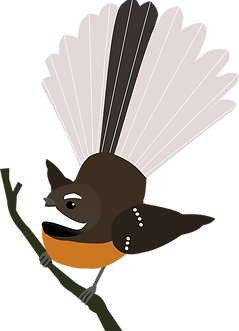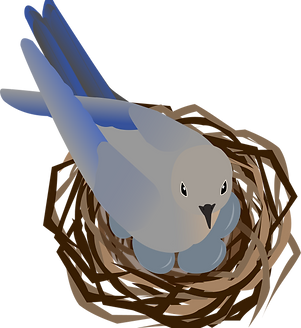Juli Gaviraghi Mussoi
Lecturer in Animal Behaviour
PROJECTS
To see more or discuss possible collaboration
Current Projects

Are sleepy birds sloppy singers? Using songbirds to examine the relationships between sleep and
vocal learning. | 2024 - present - Auckland and Hamilton, New Zealand
From jellyfish to humans, all animals sleep. Sleep is especially important for behaviours that require cognitive function, such as problem-solving or learned vocalisations. However, with an increase in urbanization, anthropogenic disturbances can fragment sleep patterns of wild animals, which may negatively impact behaviour and populations.
In this project, we are investigating the effects that sleep disruption has on vocal learning and its fitness consequences.
Past Projects
The importance of sleep for vocal performance of common mynas (Acridotheres tristis) | 2019 - 2023 - Auckland, New Zealand
During this project, we investigated the effects that sleep disruption has on vocal performance in common mynas (Acridotheres tristis).
Supervision: Kristal Cain, Margaret Stanley
Thesis Link

Effects of sleep on neurobehavioural performance of Australian magpies (Cracticus tibicen) | 2019 - Melbourne, Australia
Sleep has been shown to be crucial for vocalization and cognitive development. However, little is know how sleep, or the lack of, affects the behaviour of adult birds. In this project, we showed that sleep loss impairs motivation and cognitive performance, and alters song output, in Australian magpies.
Supervision: Kristal Cain, John Lesku
Other Researchers: Robin Johnsson, Farley Connelly

Vocal communication in New Zealand Fantails (Rhipidura fuliginosa) | 2019 - 2020 - Auckland, New Zealand
New Zealand fantails - pīwakawaka - are known for being curious and for their distinctive song and display. The aim of this project was to investigate whether males and females have distinct song complexities.
Supervision: Kristal Cain
Co-supervision: Margaret Stanley

Detection of moving targets in budgerigars (Melopsittacus undulatus) | 2018 - Lund, Sweden
In this project, we wanted to determine the spatial acuity of birds. To do so, I trained and tested budgerigars in a two-choice experiment which consisted of achromatic moving targets of different sizes that were presented on an LCD screen.
Supervision: Almut Kelber
Main investigator: Sandra Chaib

Mirror-mediated spatial location in great tits (Parus major) | 2017 - 2018 - Lund, Sweden
In a previous study, great tits were tested for self-recognition in the mark-mirror test and failed, behaving as if the reflection in the mirror was a conspecific and not themselves. In this study I tested whether great tits were able to understand mirrors in a mirror-mediated location task. I also analysed sex, environment and age of each bird.
Supervision: Anders Brodin
Problem solving in forest and urban great tits (Parus major) | 2016 - 2017 - Lund, Sweden
It is often assumed that urban birds are better than birds living in rural environments in problem solving tests, the reason being that they are more adapted to novel food sources and human made conditions. Therefore, in this project, we tested if there were differences in the problem solving abilities of urban and forest birds in two tests: the plug-opening and string-pulling tasks.
Supervision: Anders Brodin
Other researchers: Ineta Kačergytė and Utku Urhan

Behavioural analysis of Southern Lapwing (Vanellus chilensis) with human presence. | 2013 - Farroupilha, Brazil
Southern lapwing's habitat is constituted of open grasslands near water bodies. In urbanized areas, they use soccer fields, airports, and agricultural fields to feed, breed and nest. However, they are a very territorial species, known to mob other animals, including humans. In this study, I observed a group of lapwings and analyzed if human presence had any influence on their behaviour.
Supervision: Renata De Boni Dal Corno

Associations of parental care and offspring quality in mountain bluebirds (Sialia currucoides). | 2013 - Kamloops, Canada
In this project I helped a Master investigate whether mountain bluebirds coloration and parental care were associated with offspring quality.
Supervision: Matthew Reudink
Main investigator: Sarah McArthur
